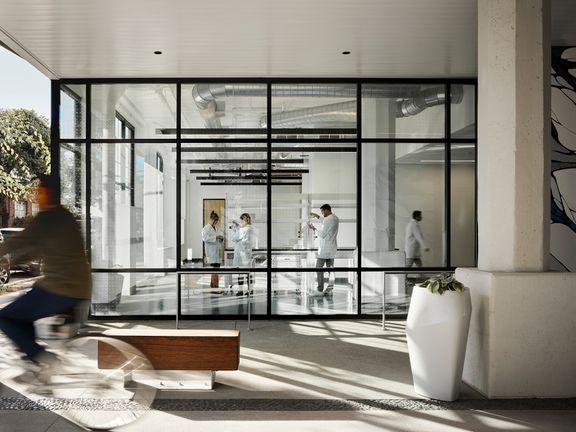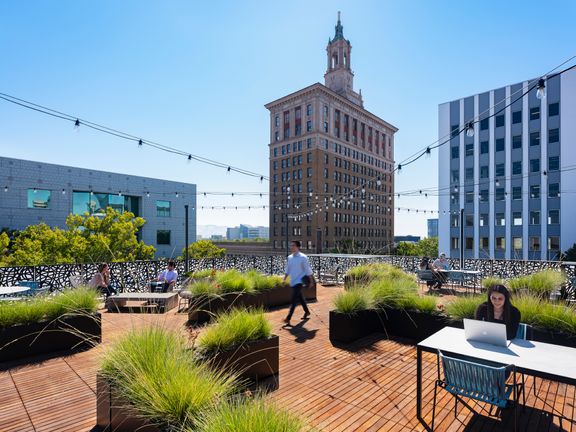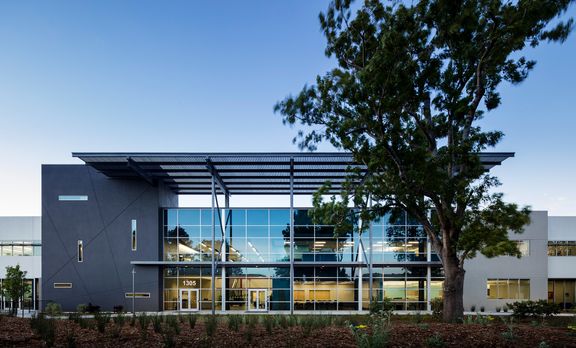Workplace Clinics as Catalysts for Preventative Care and Research
Howard Kwok RA
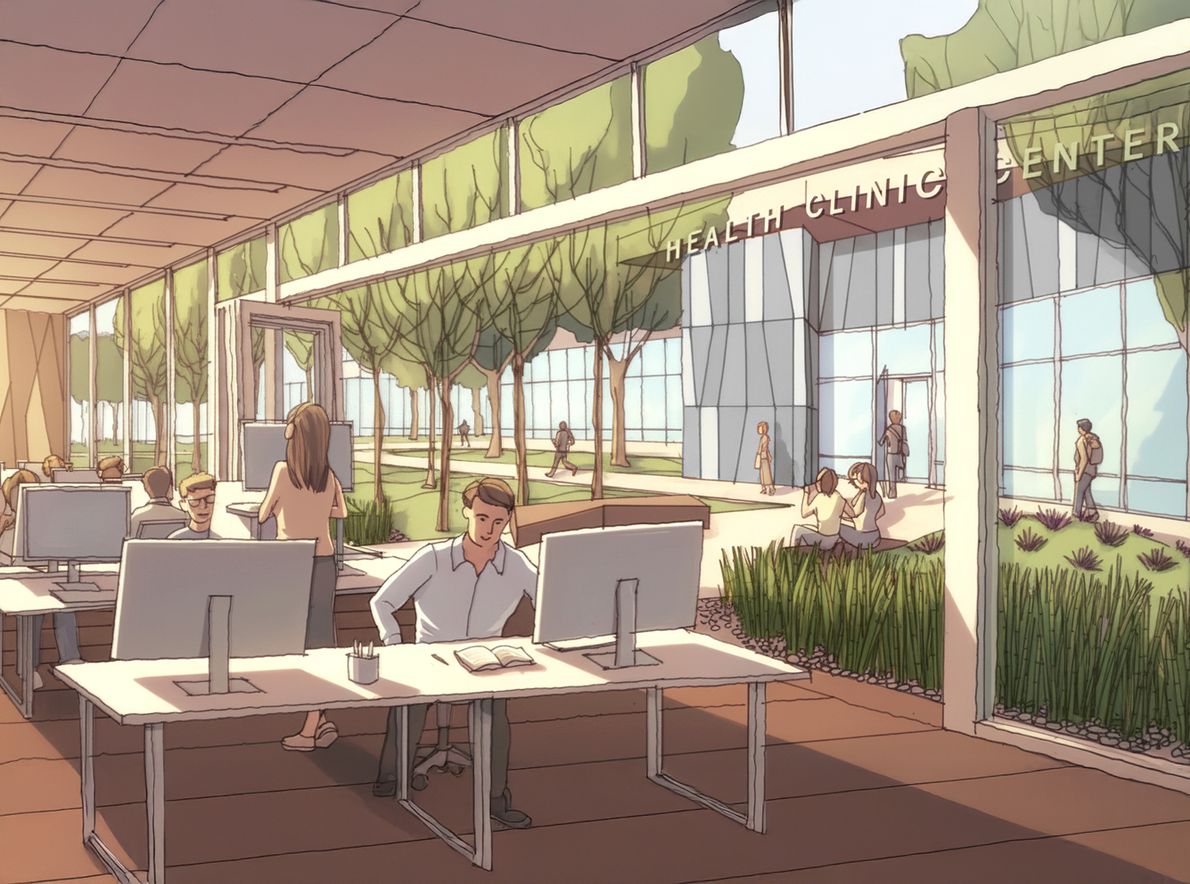
An on-campus clinic is advantageous to both employer and employees.
Developed in collaboration with Gloria Breck, DES
As the boundaries between work and life continue to blur, the workplace itself is becoming an unexpected ally in advancing health and wellness. Onsite and nearsite healthcare clinics present a powerful opportunity to reimagine how work environments can proactively support the modern worker, moving beyond treatment toward prevention, research, and long-term wellbeing. By integrating healthcare directly into the fabric of the workplace, organizations can foster healthier teams while contributing valuable insights to the broader landscape of healthcare innovation.

In January 2025, McKinsey projected an increase of over 10% in operational growth profit by 2028 for onsite clinics that offer medical services to both employees and their families, signaling that the model is becoming more financially attractive and sustainable over time.
This has been true for some time in the Bay Area, where longtime client and healthcare provider Crossover Health has reimagined care delivery to be adaptive to patient needs by partnering with some of Silicon Valley’s most innovative companies to provide comprehensive care within or near the workplace campus environment. The concept focuses on keeping the team members healthy, providing Wellness care instead of just Sick care. With this goal in mind, our team of designers worked closely with Crossover to rethink the patient and staff experience. For the patient, this meant: more like a spa, less like a hospital. Upon arrival, a concierge greets incoming patients in an open and sunlit lounge, where they are then shown to one of the dual-access exam, physical therapy, or massage rooms. The exam rooms feature sliding doors, wardrobe closets with phone and laptop chargers, and built-in conversation tables. In addition, each exam room has doors on both sides—one for patient access and one for provider access to improve workflow and patient privacy, comfort and experience.
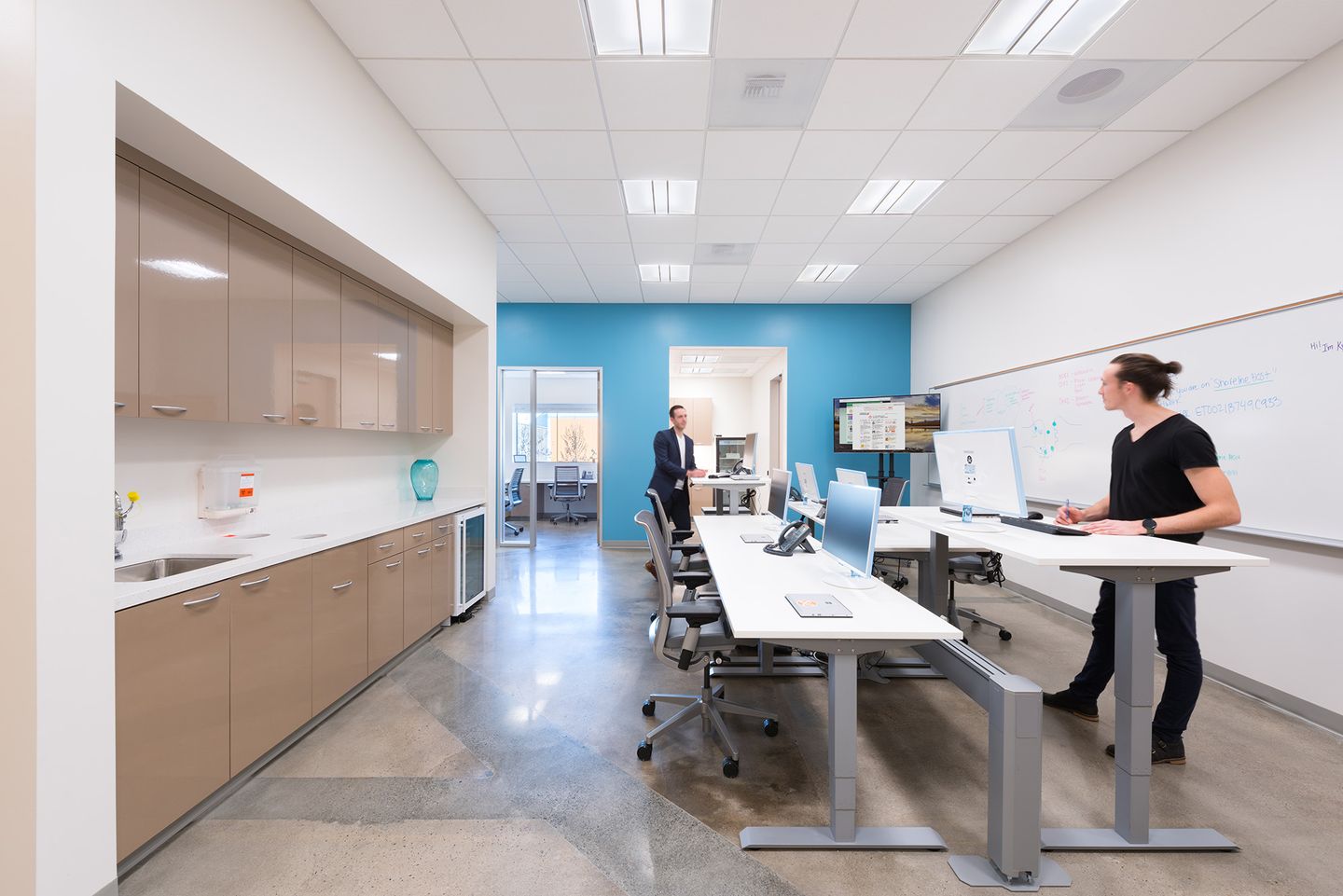
With Crossover’s team-based delivery model, we programmed a single team area that co-locates physicians, nurses, and other health professionals into one centralized space. This care area has direct access to the exam rooms through the staff entrances and specimen collection cabinets, improving the care team collaboration and optimizing staff flow. This has proven to relieve stress for the providers and create a smoother working environment, which in turn positively affects patient care.

Clinics like these have already forged a new pathway for what is possible in healthcare. In its first year, one clinic in Mountain View, CA reduced wait times to less than 5 minutes (compared to 20 or more minutes for conventional primary care) and received a satisfaction rating of over 90%. Since completing this project, we’ve designed more than 30 wellness centers with Crossover across eight states, including clinics for Amazon, Facebook, Microsoft, LinkedIn, HP, Synopsis, and many others.
Taking a step back from the Bay Area, there is no market better primed for a healthcare revolution than that of Central Texas, where DES took part in the realization of Crossover’s downtown Austin Wellness Center in 2022. There is a strong Med-Tech and Life Sciences pull to the region, with the UT Austin Medical Center—anchored by two new hospital towers, one operated by MD Anderson Cancer Center and a second UT Austin specialty hospital. Austin is also advancing a new life‑sciences land‑use designation that Mayor Kirk Watson has highlighted as a way to build a clustered innovation economy. Health systems are scaling to meet demand: Ascension Seton Williamson is nearly doubling capacity with a new 214,000‑square‑foot tower in Round Rock; Baylor Scott & White is expanding its Round Rock medical center and operating outpatient clinics across Williamson County; and St. David’s has expanded its Round Rock medical center and operates affiliated ambulatory surgery centers serving area residents. Several higher learning institutions such as UT’s Dell Medical School, Texas State at Round Rock, and Austin Community College, among others, have made large investments in their programs to fill the gap in necessary skilled medical professionals. Amid this rapid transformation, Austin’s healthcare system has the opportunity to evolve just as boldly—embracing new models, partnerships, and innovations to keep pace with the region’s extraordinary growth.

Crossover’s Austin clinic on 7th street in downtown makes multi-service care accessible to the urban business district.
Consistent challenges in the healthcare system have emerged and we can predict how they may shape the healthcare landscape of tomorrow.
- Access and cost pressures have caused an imbalance in specialty service expertise that challenge the traditional inpatient-heavy model of hospital care.
- Accelerated technology and population growth has led to a flooding of the care system, and facilities are often obsolete by the day they open.
- The modern workforce expects operational flexibility with the evolution of new standard models like telehealth, remote monitoring, and predictive analytics, while an aging population still expects in-person one-on-one care.
The future of healthcare will depend on powerful partnerships—uniting innovation, education, technology, employers, and healthcare providers—to create connected systems where care is predictive, personalized, and accessible. Workplace clinics and decentralized onsite medical outpatient buildings are well-positioned to become the ideal form of community-centric care. In this model, onsite clinics would integrate a broad spectrum of services that center and treat the whole person: primary care, behavioral and mental health, physical therapy, dental and vision services, alternative therapies such as acupuncture, chiropractic, and massage, and emerging modalities supported by data-driven insights.

Howard Kwok RA
Senior Associate | Project Manager
As the region’s private sector continues to invest in health technologies, these onsite clinics also become ideal environments for piloting new tools like wearables, biometric sensors, activity trackers, digital therapeutics, and personal health devices, before they scale to broader populations. With real-time data flowing between patients, providers, and digital means, these environments can push innovation forward while reducing barriers to care.
This evolution does not replace traditional hospitals; instead, it helps them. By shifting routine, preventative, and wellbeing-focused care into distributed settings supported by employers and technology partners, hospitals can reserve more capacity for patients with higher-acuity needs. In this shared ecosystem, every player—from providers, employers, educators, technologists, to patients—benefits from a more coordinated and humane healthcare ecosystem.


